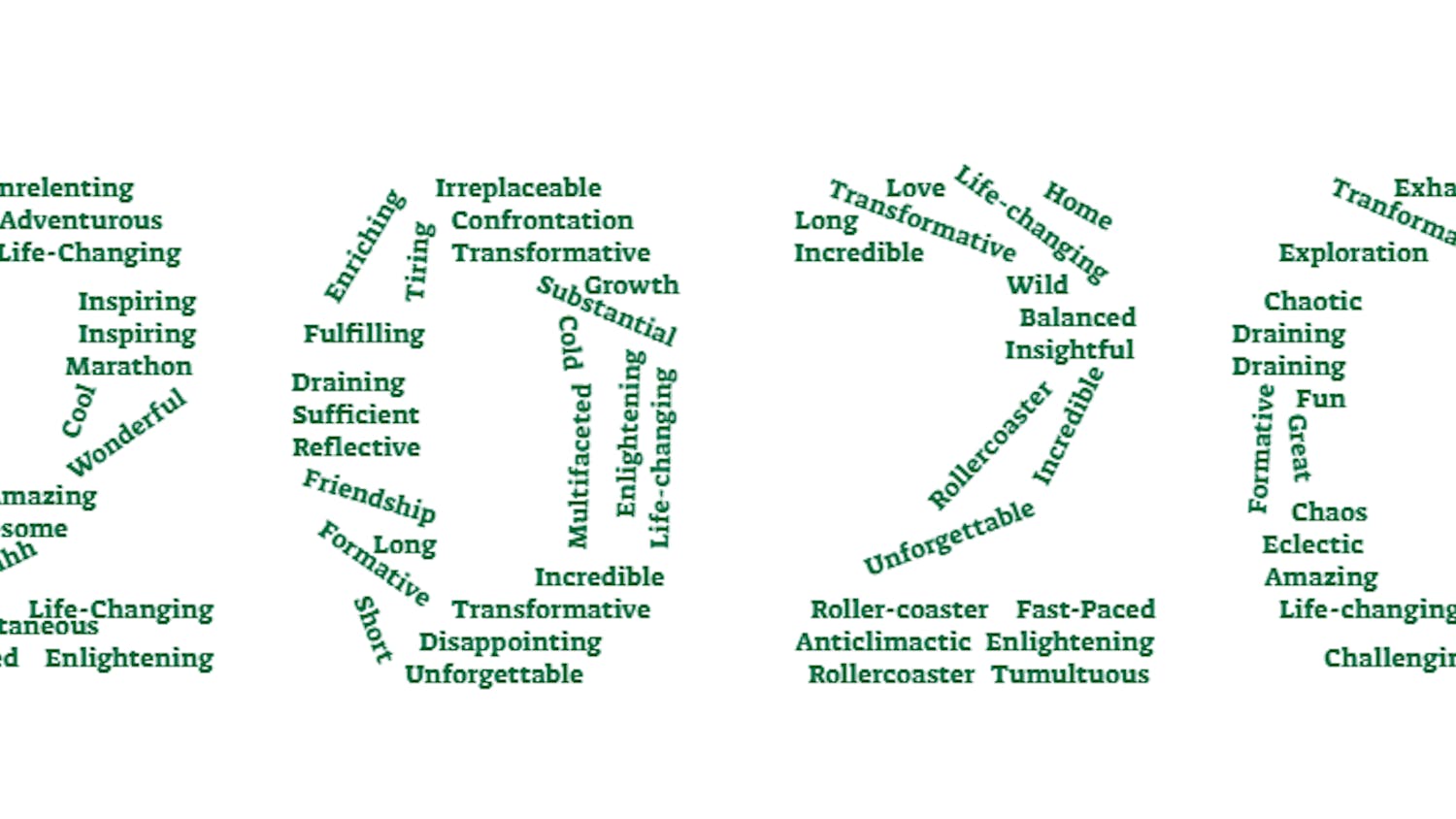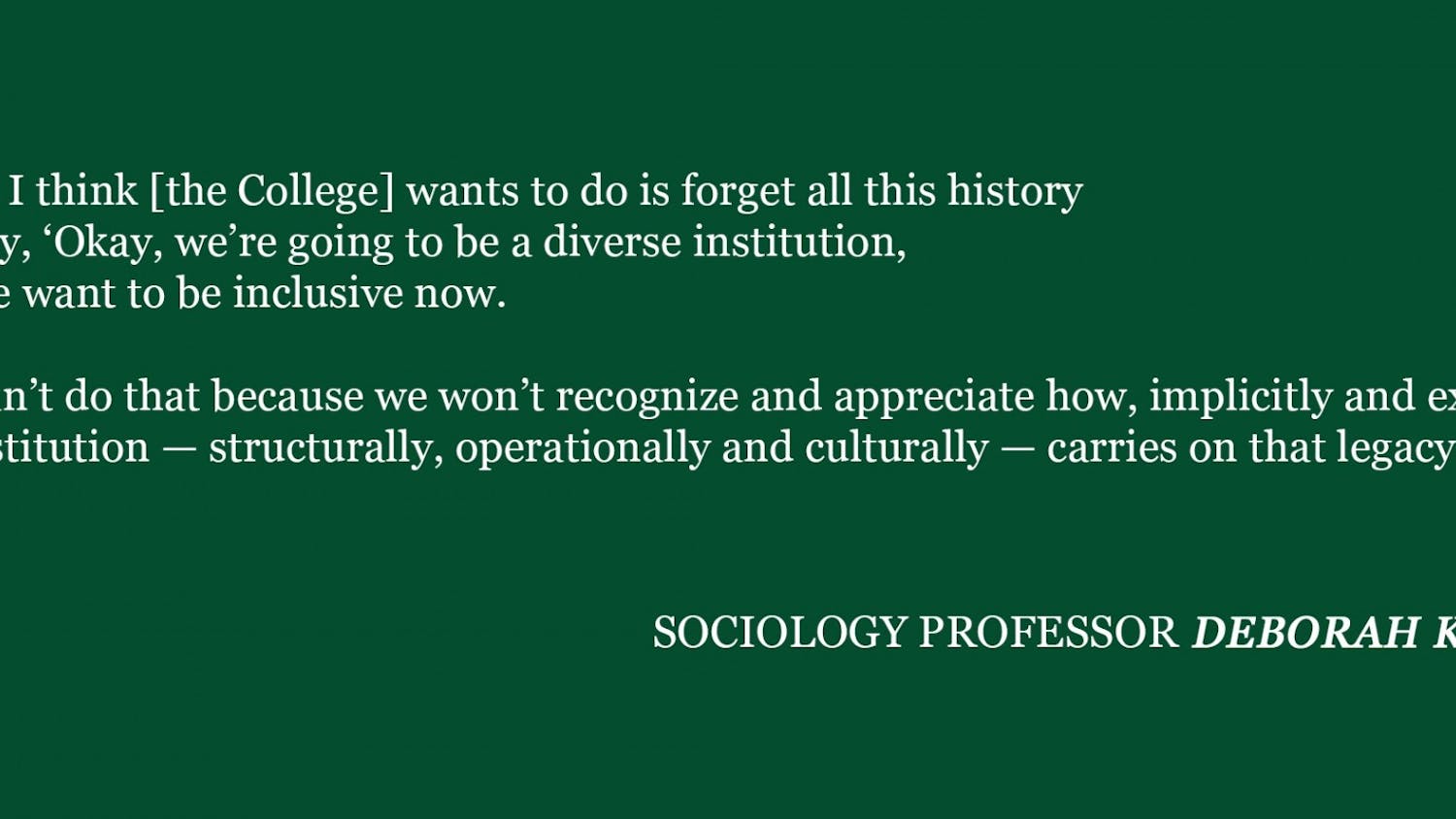In public art controversy, the art in question is almost always the occasion for voicing other grievances. For example, when attacking the colonial legacies of racial inequality seem impossible, the easier and at times more productive thing to do is to criticize a work of public art and demand some form of public representation that would symbolically rectify what otherwise seems politically or economically intractable. Dartmouth College is no stranger to public art controversy. From Orozco's frescos, executed in 1932-33, to Walter Beach Humphrey's "Hovey Murals," completed in 1939, to Wenda Gu's "hair installation" occupying the library's Main Street in 2007-08, the College has witnessed periodic calls for censorship, often accompanied by race-baiting vitriol. Bizarrely, Roger Lott's editorial in The D ("Points in Perspective, Wednesday, Nov. 10, 2010) represents the first assertion that there "should" or "ought" to be controversy where none currently exists.
Mr. Lott's complaints about Orozco's cycle are indeed old ones. Had he done research in the library's archives on the matter, he would have been reassured to find that a number of alumni voiced these and other criticisms of the cycle when it was underway (often without having seen the mural). At that time, the student body and faculty supported Orozco's murals, viewing them as timely in their content and masterful in their modern style. Since then, as a beleaguered President Hopkins suggested, they have certainly stood the test of time to become one of the most honored, famous and important works of public art in the United States. In recent years, the library, museum and several faculty (myself included) have worked hard to strengthen the didactic materials available within the Reserve corridor and online so that students, visitors and the broader community can benefit from the years of research and scholarship these murals have generated. It is a pity that Mr. Lott seems not to have consulted these materials. Other than quoting a single line about "controversy" on the library's website, his editorial demonstrates a shocking ignorance of what is actually visible in the mural itself, or, for those who are not visually literate, explained within the pedagogic materials everywhere available.
First, Mr. Lott make a series of embarrassing factual errors: Orozco was not a communist; he does not depict a socialist utopia anywhere in the mural; he did not help found "multiple organizations"; and his relationship with Rivera and Siqueiros can, at best, be described as a highly competitive rivalry (the "Three Greats" engaged in vigorous public debate, often condemning one another's work, even as they collaborated loosely to further the project of public art in Mexico). However, minor errors of fact or interpretation can be forgiven. What is more disturbing is that Mr. Lott's reading of the mural suggests he didn't bother looking at it. Had he, he would realize that Orozco does not simply condemn modernity and the legacies of the Conquest in the Americas. Rather, he offers the kind of nuance and multiple points of view that Mr. Lott calls for. For example, he critiques human sacrifice while also celebrating the accomplishments of Mesoamerican civilization (and in a more troubling passage, characterizes Native Northwest Coast totem poles as "fetishes"); he indicts the post-revolutionary political regime in Mexico while praising the revolutionary spirit in "Hispano America;" he admires the stability and order of U.S. American society, while arguing that individuality has been sacrificed to achieve this order; he endorses modern architecture and technology but asks that they be used to better society rather than implement war; and he criticizes all wars waged in the name of blind adherence to nationalism (a powerful statement within the context of National Socialism's ascendance in Europe and emerging fascist sympathies in the U.S. and Mexico).
Finally, the most disturbing feature of Mr. Lott's reading of the mural is the veiled racial ressentiment that he betrays in his willingness to take up the mantle of what he presumes to be the "white" student's values. (Here it is important to note that Orozco was, himself, not only considered "white," but also a citizen of the West and a promoter of its cultural tradition.) To characterize the fetal skeletons as "white Westerners" is a bizarre projection at best. Skeletons, by their very nature, do not have a "race" (which is part of the point here). Rather, they are symbols of humanity writ large that Orozco actually adapted from the Calaveras of Jose Guadalupe Posada (a graphic artist in late 19th century. Mexico who used skeletons to lampoon Mexicans of every race and class). Orozco's target in this panel is not "white" students or faculty, but educational institutions throughout the West (including his homeland) wherein the reproduction of institutional authority is more important than educating students. This sentiment is perhaps Orozco's most important insight and a perennial warning for us all, professors and students alike. He provokes us to interrogate what we are learning, teaching or perpetuating, and to ask to what end this knowledge is being put. He asks us to question ourselves as much as our institutions of higher learning and to fight for a truly free education, whether that freedom is defined in economic or ideological terms. This is what the raced worker reading a book in the coda symbolizes.
It is in this spirit that I invite Mr. Lott to enroll in or audit my course on Mexican Mural art in the hope that he will demonstrate a genuine attempt to engage with this work of art critically, rather than simply use it as an occasion to spur controversy over what he suggests is a quasi-racial resentment among "white" students at Dartmouth that has no outlet or representation of its own.



